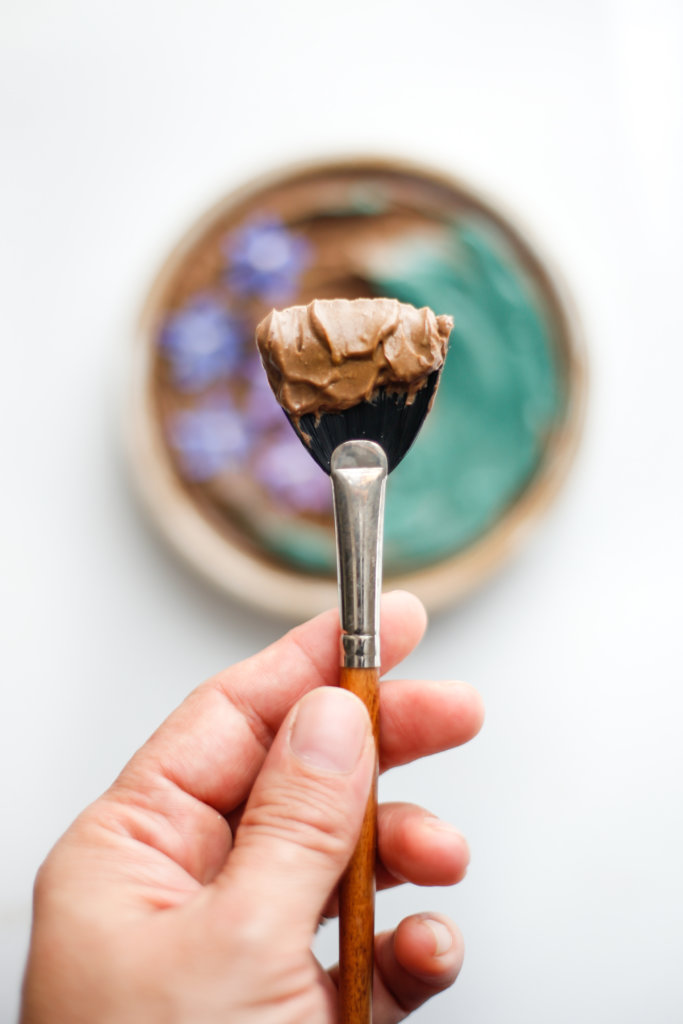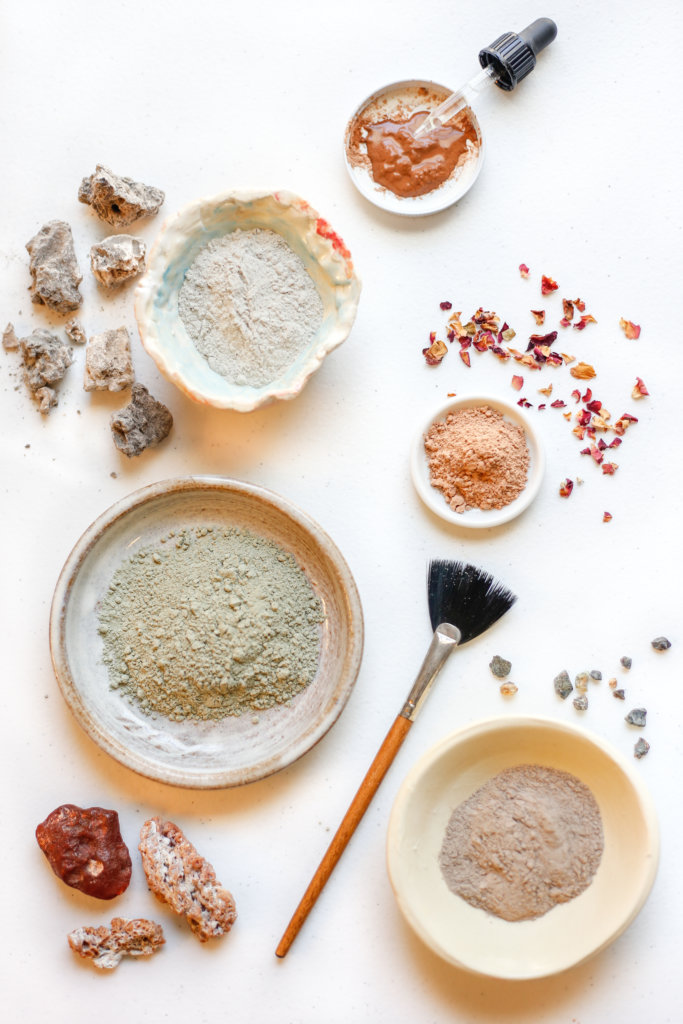
Nothing gives the skin a natural fresh start –
And when used regularly, it helps to clear blackheads, acne and restore balance to the skin. So, let’s dig deeper into clay – and hopefully, you’ll be inspired to make it part of your regular skin routine.
Actions of Clay on the skin
You might hear that clay absorbs impurities – but it actually adsorbs, which means things attach to clay particles, like a magnet. It’s a deep cleanser that clears away impurities which otherwise overwhelm the skin. It soothes irritations and it soothes inflammation. When you apply clay all over your face, it gently warms the skin and boosts circulation – this is so good for healthy skin.
I know that when I use a clay mask, my skin feels totally refreshed. It feels more tone, it looks more vibrant – and when I use clay masks regularly, I see fewer blackheads and congestion in my skin. My skin is in balance.
I do make my own clay mask treatments at home – and I mix in other ingredients depending on what my skin needs – I go into that more below.
Topical Uses of clay
The use of clay medicinally has been traced back to ancient Mesopotamia. Throughout history, we have been covering our skin in healing mud to cleanse, soothe and promote healing.
You can use clay therapeutically for first-aid and beauty simply by preparing a paste of clay and water – and applying it
- Poison ivy rashes, or dermatitis on the skin from allergic contact (ref)
- Diaper dermatitis (ref)
- Itchy stings and bites
- Blackheads and clogged pores
- Ance (ref)
- Oily, out of blance skin
- Dull complexion
Types of Clay

There are many different types of clay, and each one is a little different.
Here’s are some descriptions to see which one might be right for you:
- Kaolin Clay: Very gentle in its actions – if you want to use
clay more regularly 2-3 times per week, it’s a good option.
- Rhassoul Clay: This red earth clay was used
like soap and shampoo, it has a cleansing effect. But it also improves the texture and clarity of skin. It has very potent drawing effect, if you want a slightly more gentle remedy, you can mix in kaolin clay to create a “pink clay”
- Fuller’s Earth: Known for its use as a skin-lightener,
its a good choice when you want to brighten and even out your complexion, but also it’s very good for oily skin, mopping up excess oils.
- French Green Clay: Not always from France, but always green. It gets its color from what its made
of: decomposed plants and iron oxide. Green clay is highly adsorbent and stimulating to the skin, it takes up impurities and excess oils and has a toning effect. Great for oily skin but also maturing skin.
- Bentonite Clay: Acts very differently from other clays. It’s very thirsty, needs more water and swells up like a sponge. I love the way it feels on the skin, almost like a rubber mask, thick and cocooning. It’s very good at adsorbing impurities from the
skin, and balancing oil in the pores.
You can find and purchase clay online, and from health food stores
How to use Clay for different conditions:
It makes sense to stock your pantry with a pure, dry clay powder – and then prepare your mask
- Dermatitis, inflammation: Clay + anti-inflammatory powdered herbs
- Itchy skin: Clay + cooling, antipruritic powdered herbs
- Dry skin: Clay + demulcent powered herbs, emollients or humectants
- Oily skin: Clay + astringent powdered herbs
- Acneic skin: Clay + anti-bacterial, anti-inflammatory powdered herbs, but also clay combined with jojoba oil has been shown to reduce pustules
- Healthy skin: Clay + tonic, nourishing and alterative powdered herbs
- Dull or Congested skin: Clay + buttermilk powder
Pro Clay Tips
Mixing: When making a clay mask, add the clay to the water – not the other way around, for better consistency. The right way makes a mud, the other way makes a sludge.
Consistency: For one facial application, add 1 tbsp of water to a bowl, and then begin to mix in the clay until it reaches the right consistency. You can then add in oil, or honey if you choose.
Time-saving: You can pre-make a batch of blended dry ingredients (clay + powdered herb or powdered milk) and store it in a jar, good for 3 months. Simply spoon out your clay blend to create a mask as you need. Application: Never let a clay mask dry and crack

3 responses to “Ingredient Spotlight: Clay, what it is and how to use it”
So if you want to mix up a clay and oils in a little jar that’s enough for a few uses does it need to be refrigerated? Or are there any natural preservatives to add?!
Hi Holly! Yes, you can mix clay with oil and it will keep for weeks on your bathroom counter, in an air-tight jar. Here are two recipes for you to try: https://littlegreendot.com/beauty-bliss-balls-dark-chocolate-cleanser-and-mask/
https://littlegreendot.com/homemade-dark-chocolate-body-mask/
How can I get tonic, nourishing and alterative powdered herbs